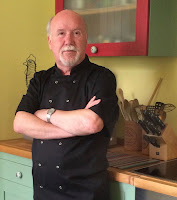Boiled egg and soldiers with a twist
The Recycled Cook Boiled egg and soldiers with a twist This is my attempt at taking one of my all time favourite breakfast dishes, boiled egg with toast soldiers and giving it that extra little twist. To be honest this recipe is a derivative of a restaurant dish by one of the UK's top chefs, Nathan Outlaw (great name) but he takes it a lot further, using duck eggs and making freshly baked saffron bread, I know my limits. This is a dish that could be served as a special breakfast or as a lovely brunch for family and friends. Having made this for the first time and realising just how much preparation is involved I would recommend doing some of these stages the night before and keeping the ingredients in the fridge, you will give yourself far less pressure. Before you start make sure you have two bowls of prepared ice water ready. Firstly boil your eggs for approximately five to six minutes depending on your preference, You want the white firm but the yolk soft. Im...






Comments
Post a Comment